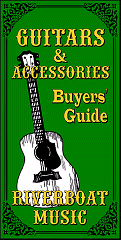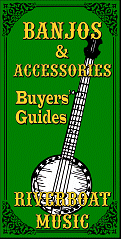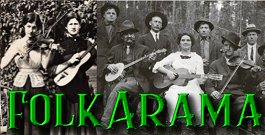
Learn the C chord and its Lazy Cousin, C9
| Please Read: How to Help Our Site at No Cost to You - Some of our articles contain recommendations for products we like and vendors we personally trust. Some of those vendors may pay us a very small commission if you click on a link and buy their products. This costs you nothing at all and helps offset the costs of what we do. So if we point you to something you decide to buy later, please make certain you come back through our site and click on the link directly. Thanks. |
| This Site is a Cookie-Free Zone - Except for discussion forums that you have to expressly register for, none of our pages use cookies of any kind. Some of the vendors we link to do, but that won't affect you unless you click on a link to their pages. Your continued use of this page indicates that you agree to our policy. For details, click here. |



|


C and C9 Chords
This is part of the "VERY Basic Guitar subset of our "How To Folk" articles. In an effort to "jump start" your enjoyment of Folk music and your ability to join in, no matter what instrument you play, we are providing some very basic notes about guitar chords.

 Note: - This is part of the Folkarama page, which is dedicated to helping beginners "get into" Folk music and join Folk communities as easily as possible, with simple articles and links to resources that provide hands-on instruction in traditional acoustic instruments.
Note: - This is part of the Folkarama page, which is dedicated to helping beginners "get into" Folk music and join Folk communities as easily as possible, with simple articles and links to resources that provide hands-on instruction in traditional acoustic instruments.
Folkarama, in turn, contains many references to more extensive articles and resources in Paul Race's CreekDontRise.com site, as well as other related pages.
Previously on "Basic Guitar"
Hopefully, you have already worked your way through these materials:- Meet Your Guitar - a very basic intro to holding, tuning, and picking the guitar.
- Three Magic Chords - a three-part series to introduce enough easy guitar chords to get you started on learning scores of 2-chord songs.
Moving Along
If you've been playing 3-chord songs in D, you may have noticed that many of those songs are out of your vocal range. That's one reason everybody doesn't sing every song in the same key.On top of that, there are a number of reasons to play 3-chord songs in the key of G. One is that it is a favorite key among Folk, Bluegrass, and Country musicians, and the favorite key of Bluegrass banjo players.
But to play 3-chord songs in G requires learning at least one new chord. Do you remember how D had two related chords: A7 and G?
In the key of G, the related chords are D7 and C, which we haven't taught you yet. But learning to play three-chord songs in the key of G will open the door to thousands of more songs in Folk, Country, Bluegrass, Pop, and even some Rock. So you need to learn the C chord or something like it.

The C Chord Proper
We'll start by showing you the C chord, since you really will need to learn it anyway, eventually.You'll notice immediately that your ring finger, which has quite happily stayed on the first or second string so far, has to find its way all across to the fifth string, and your middle finger is close behind.
When you try to go from G to C, you'll notice immediately that there is no easy way to "get there from here." This has frustrated countless would-be guitar players, and made more than one of them give up prematurely.
That said, the C chord as shown is important for any number of reasons. The guitar parts for some Folk, Folk-Rock, and Pop songs can only be played properly in C ("Dust in the Wind" and "Wildwood Flower" come to mind).
And quite a few other songs are traditionally played in C, just because that's the key the original recordings by folks like the Carter family used.
Learn this chord, and learn how to go back and forth between C and G. You wanted to learn guitar - this is one of the hurdles that separates the truly motivated from the "Playing guitar will make me look cool" folks.
Seriously. Practice this chord, and practice going back and forth between C and G.
But don't quit guitar over the C chord just yet. There's a workaround if you're playing in G.
 The C9 Chord
The C9 Chord
A "ninth" chord is typically a major chord with an extra note (just as a "seventh" chord is most often a major chord with a extra note.)
In this case, the "ninth" is a D note, the ninth note of a C scale. It's also the second note of the C scale, but in this case it's played above most of the other notes, so they call it a ninth.
I started using this chord decades ago for my version of Jorma Kaukonen's "Good Shepherd." I needed to hold onto the D note while playing C to B to A on the lower strings. (There's a YouTube of me using this song to demonstrate a Deering D6 six-string banjo here.)
Later, I discovered that it was useful in songs where you had to go between G and C very fast many times ("You Can Tell the World," Stookey's "Early in the Morning," and more).
Nowadays, countless younger folks are using this chord most of the time they need to go between G and C. The D note that has been added to the C chord doesn't clash much, and you barely hear it.
If you're using a standard G chord fingering, you'll notice that going from that to C9 isn't much better than going from G to C. But if you're using the alternate G chord fingering that uses your pinky, the transition is a piece of cake. You only have to move two fingers over one string each. And going back is just as easy.

What is and Isn't a True C9? - In Piano/Vocal arrangements and "Lead Sheets," a D9 is sometimes mislabled a D2. Worse yet, certain other kinds of chords are frequently mislabeled "ninth" or "second" chords.
Or songs that started in G but have been transposed to other keys keep a ninth chord for no good reason. OCD pickers are killing themselves to manage, say, a G9 chord, when it's really just a transcription mistake by a piano player who doesn't understand guitar.
Don't lose it if you see such things. Find the chord version that works for you and let it go. In most cases, the standard major chord is a fine choice.
 Songs that Use G, C (or C9), and D7 (or D) - One easy song to play with three chords is "Boil that Cabbage Down." We're giving you sheet music to help you get a sense of where the chords change.
Songs that Use G, C (or C9), and D7 (or D) - One easy song to play with three chords is "Boil that Cabbage Down." We're giving you sheet music to help you get a sense of where the chords change.
To download a lead sheet (showing the melody and chords), click here.
You'll notice that on the lead sheet, we've used the "alternate G," as well as C9. We also used D instead of D7, which would normally be used. In this case, using D allows you to keep your ring finger in the same place throughout the entire song. And nobody will probably notice that you're not using D7. That said, you'll want to get used to using D7 as well, eventually.
There are hundreds of other 3-chord Folk songs that you can play in the key of G, using G. C (or C9) and D7 (or D), including "Amazing Grace," "Will the Circle Be Unbroken," "'Tis the Gift," and more.
Countless pop songs can be played in G using just three chords as well.
We have a list of 3-Chord Songs in G here.
Playing Songs in C
And don't despair about learning the C chord proper. C's BFF, G7 is actually pretty easy to play if you're going back and forth from C. And one way to play F (which we'll discuss in another article) isn't far behind.
G7 - If you want to play a song in C you'll almost always need G7. Fortunately the most common way of playing G7 is pretty close to the way you play C proper.
Practicing C to G7 and Back - Songs you can play with just C and G7 include "Buffalo Gals," "Go Tell Aunt Rhody," "Down in the Valley," "My Darlin' Clementine," "Down at the Station," "Tom Dooley," and "He's Got the Whole World in His Hands." We have a downloadable lyric sheet with the words and chords for several of these songs here.
Songs that can be sung with only 2 chords include "Darlin' Corey," "Rovin' Gamber," "Bring Me a Little Water, Silvie," and "Hallelujah I'm a Bum" (or "Revive Us Again.").
That said, once you learn the F chord, there are ways to make most of those sound a little more interesting.
Conclusion
To be entirely honest, adding a ninth chord of any kind at this stage almost always causes confusion, especially when so many transcriptions and chord charts misidentify them so many different ways. (We address some of those in the addendum further down this page.)For now just be glad there's a workaround for the otherwise cumbersome G-to-C-to-G progressions and take all OTHER "ninth" chord listings with a grain of salt.
Your first takeaway from this page should be the ability to whip off 3-chord songs in G. There are literally thousands, and most guitar players play in G a lot (though some prefer other keys).
Once you've gotten good at three-chord songs in G, you should be ready for the next section, which actually has two fairly easy chords that will give you even more access to the songs you love.
Where to Go From Here? - At this point, I would recommend following the following progression of lessons, which will bring you back to the key of C eventually, but will first introduce you to more chords that most acoustic guitar players use all the time.
- It's All Relative - Am and Em
- A Major - the Fiddler's Friend
- E Major, a Cornerstone of Blues and Folk
- F Major - Set your C Chord Free!
But if you need to play in C before you learn those other keys, feel free to jump ahead to the F Major article.
Other Resources
The current resources we have published include:
- Meet Your Guitar - a very basic intro to holding, tuning, and picking the guitar.
- Three Magic Chords - a three-part series to introduce enough easy guitar chords to get you started on playing hundreds of 2- and 3-chord songs. Articles include::
- 3-Chord Songs in D - A list of songs you can easily play in D, using G and A7. (When you get a little farther along, you can also play many of them in E, using E, A, and B7. Or in C, using C, F, and G7. Yes, we will show you all of those chords eventually.)
- What is a 3-Chord Song? - Explains "3-chorders," and how understanding them will help you learn or follow along on thousands of songs without sheet music or lead sheets.
- More Useful Chords - "Next steps" to expand your range and enable you to play even more songs, including:
Addendum: More "Ninth" Chord Confusion
You don't really have to learn this stuff now, but if you want to glance at it and come back later when you encounter other "ninth" chords that don't seem to work the way this one does, that's fine.
You may notice other chord names with a "9" attached. For example:
- Jazz musicians often attach a ninth to a chord that is already a seventh chord. A Folksinger would just write it a, say G7,9. But a Jazz musician would probably write it as a G9.
One version of the C7,9 chord is shown at the right. Jazz musicians, however, know about a dozen other ways to play it.
- When guitarists write D9 or A9 (or D2 or A2), they're often signifying chords that not only include a ninth (or second), but also remove the third.
Sometimes these are written as, say, D9 no 3rd or such, but there's usually not room or the transcribers don't bother.
- So in a D9 no 3rd chord, the F# (first string, second fret) is lowered to an E (first string open).
- In an A9 no 3rd chord, the C# (second string, second fret) is lowered to a B (second string open).




D Major Chord D9 no Third Chord
Often listed as D9A Major Chord A9 no Third Chord
Often listed A9Also, among different groups of musicians, such chord names are written down in different ways, so a Bluegrass musician may write it one way, a Worship musician musician write it another way, and so on. I get plenty of criticism however I write such chord names out, depending on which group's naming convention I have offended. Feel free to e-mail me and tell me how I've offended you. I'll add it to the collection.
Sister Sites
 Other sites we started to keep this site from getting too big to be useful include:
Other sites we started to keep this site from getting too big to be useful include:
- CreekDontRise.com is a repository of articles about Folk music and the instruments on which it has been traditionally played.
The "Acoustic" page includes a long list of articles including maintenance and playing tips on all sorts of traditional acoustic instruments.
 RiverboatMusic.com is a buyers' guide for acoustic and traditional instrument from a musician's point of view, focusing on the uses, reliability, and practicality of various instruments, and not just the marketing hype about the shape of the fret markers or whatever.
RiverboatMusic.com is a buyers' guide for acoustic and traditional instrument from a musician's point of view, focusing on the uses, reliability, and practicality of various instruments, and not just the marketing hype about the shape of the fret markers or whatever.
For instruments like dulcimers that have mostly small manufacturers or cheap imports, we try to tell you what to look for, irrespective of brand.
 Momma Don't 'Low includes a free e-mail newsletter that discusses all of those topics above and more. We plan to include other features as time permits.
Momma Don't 'Low includes a free e-mail newsletter that discusses all of those topics above and more. We plan to include other features as time permits.
Note - If you wish to sign up for our newsletter and ask a question at the same time, please click on the Momma Don't 'Low newsletter button to learn more and to get a link to our signup form.
 PaulRaceMusic.com is the "landing page" for Paul's own musical endeavors, plus many memoirs and blogs about music and the music business.
PaulRaceMusic.com is the "landing page" for Paul's own musical endeavors, plus many memoirs and blogs about music and the music business.
 ClassicTrainSongs.com describes railroad songs that every train lover should know. Or at least know about.
ClassicTrainSongs.com describes railroad songs that every train lover should know. Or at least know about.
- SchoolOfTheRock.com has articles about Christian music, Christian music careers and performance, Christian living in general, and vintage saxophones, another of Paul's interests. This site has separate newsletters, etc., by the way - there isn't a lot of overlap with the Momma Don't 'Low(tm) newsletters.
For information about other music collections and projects, check the links at the bottom of this page.
 Whatever else you get out of our pages, I hope you come away with some great ideas for "sharing the joy."
Whatever else you get out of our pages, I hope you come away with some great ideas for "sharing the joy."
And please stay in touch!
All material, illustrations, and content of this web site is copyrighted (c) 2001, 2002, 2003, 2004, 2005, 2006,
2007, 2008, 2009, 2010, 2011, 2012, 2013, 2014, 2015, 2016, 2017, 2018, 2019, 2020, 2021, 2022, 2023 by Paul D. Race. All rights reserved.
Creek Dont' RiseTM is a participant in the Amazon Services LLC Associates Program, an affiliate advertising
program designed to provide a means for sites to earn advertising fees by advertising and linking to Amazon.com.
For questions, comments, suggestions, trouble reports, etc. about this page or this site, please contact us.
| Visit related pages and affiliated sites: | |||||
| - Music - | |||||

|
 |
 |

|

|

|

|

|

|

|

|

|

|

|

|

|

|

|
| - Trains and Hobbies - | |||||
 |

|

|  |
 |

|
| - Christmas Memories and Collectibles - | |||||
 |

|
 |

|
 |

|
| - Family Activities and Crafts - | |||||
 |

|

|

|

|

|

